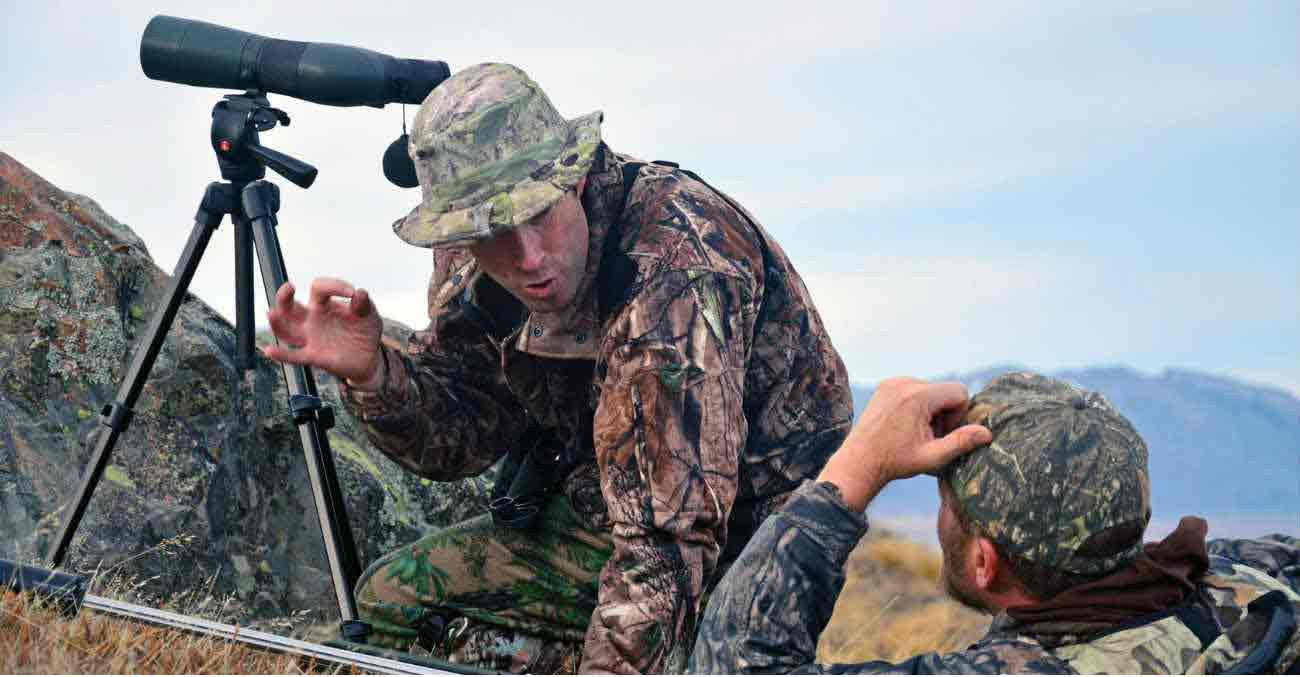Spotting scope buyer's guide

Our spotting scope buyer's guide provides you with information to help you choose a spotting scope and help you understand spotting scope specifications.
The information below will explore the difference between spotting scopes, monoculars, and binoculars and help you choose the perfect scope to suit your needs. We'll also guide you through the technical information about spotting scopes to help you choose the best spotting scope specification for you.
Why choose a spotting scope?
Spotting scopes are widely known as the top of the range type of scope due to their high magnification power. They can be best described as a cross between a small telescope; which has been modified for day time, terrestrial use, and a large and very powerful monocular. Spotting scopes are similar in design to monoculars, as both products are comprised of one scope which can be used to view images through either eye. The two types of scope simply differ in size and power; monoculars that have larger lenses, more powerful magnification, and wider views are called spotting scopes.
Spotting scopes are:
-
made up of only one viewing scope
-
the most powerful scope to be used for land viewing, providing a magnification which often ranges from 20-60x that of the unassisted eye
-
often used for bird watching, hunting, surveillance, plane spotting and ship spotting.
-
available in a range of sizes
-
larger and heavier than binoculars and monoculars so typically require tripods for effective use and are less portable
-
often more durable than monoculars and binoculars
-
often more comfortable to use for extended viewing activities as they allow eye pieces to be changed for different applications
-
unable to provide the same close focus ability as binoculars.
Still unsure which scope will best suit you? Let’s take a look at the key differences between spotting scopes, monoculars and binoculars.
Spotting scope vs binoculars and monoculars
The most significant functional difference between spotting scopes, binoculars and monoculars is their magnification power. With a magnification power of 20x that of the unassisted eye or higher, spotting scopes are much more powerful than both monoculars and binoculars. A second major difference is lens size, something which often results in spotting scopes being much larger and less portable than other land viewing scopes. We’ll talk more about magnification and lens size later.
Choosing the right spotting scope for you
Understanding the numbers
Now that you have considered the pros and cons of spotting scopes, it’s time to take a closer look at the specification of spotting scope that you require.
The specification of a spotting scope is indicated by two numbers. The first number is the magnification power of the spotting scope; the second is the diameter of the spotting scopes objective, or front lens. These two elements effect how the spotting scope will perform in different circumstances and also the size of the spotting scope.
We’ve provided an example below to help you understand how this works.
Example: A spotting scope with a specification of 20-60 x 70mm
Magnification power
This spotting scope will have a magnification power that ranges between 20 and 60, meaning that an object will appear between 20 and 60 times closer than it would to your unassisted eye, depending on the magnification range that you have set. For example, if you view a buck that stands 100 metres away from you through a 20-60 x 70mm spotting scope that is set at a magnification of 60, it will appear as though it were only 1.6 meters away (100 divided by 60). Spotting scopes with higher magnification will allow you to see further and in more detail.
Note: It is important to remember that the higher the magnification of your spotting scope, the more prone the image you see is to being effected by movements of your hands. Due to this, high-magnification spotting scopes usually require a tripod as otherwise, movements make the image wobble too much to view it clearly.
Objective lens diameter
The second number used in spotting scope identification refers to the spotting scopes objective lens diameter. The objective lens is the lens at the front of the spotting scope, furthest away from your eyes, and closest to what you are looking at. The objective lens diameter of the example spotting scope is 70mm.
Most spotting scopes feature an objective lens with a diameter of between 50 to 80 mm. The diameter of the objective lens largely determines how much light your spotting scope can gather. The larger the objective lens diameter, the more light that the spotting scope will capture. More light means a brighter view, particularly in low-light conditions. The downside is that the bigger the lens is, the heavier and bulkier your spotting scope will be.








